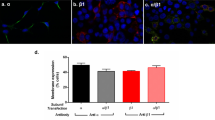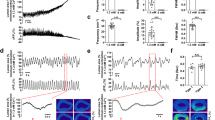Abstract
Patch clamp techniques in freshly isolated myocytes from human corpora have documented that the large conductance calcium-sensitive K channel (KCa) subtype represents an important convergence point for the modulation of corporal smooth muscle tone, and therefore, erectile capacity. Other recent studies indicate a similar role for the KCa channel in the modulation of smooth muscle tone in the rat penis. Therefore, the explicit aim of this investigation was to evaluate and compare the characteristics of the KCa channel subtype present in freshly isolated myocytes from rat and human corpora. In short, myocytes isolated from rat and human corpora retain their characteristic morphology and contractility in vitro, as evidenced by light microscopic studies of their respective responses to activation of the α1-adrenergic receptor subtype by phenylephrine (PE). Large conductance K+ currents commensurate with the presence of the KCa channel were readily apparent in myocytes from both preparations. I–V curves constructed from cell-attached patches utilizing symmetric KCl solutions revealed the presence of a single channel slope conductance of ≈200 pS for both rat and human myocytes. 1 mM TEA applied in the bath solution reversibly diminished whole cell outward K+ currents by ≈50%, and also blocked the unitary KCa channel activity observed in the outside-out patch mode. Addition of 2 mM 8-bromo-cAMP elicited a TEA-sensitive (1 mM) ≈2–3 fold increase in the magnitude of the whole cell outward K+ currents in rat myocytes. Taken together, these data confirm and extend previous observations and provide strong evidence that the rat corporal smooth muscle KCa channel has many similarities to its counterpart in the human penis.
This is a preview of subscription content, access via your institution
Access options
Subscribe to this journal
Receive 8 print issues and online access
$259.00 per year
only $32.38 per issue
Buy this article
- Purchase on Springer Link
- Instant access to full article PDF
Prices may be subject to local taxes which are calculated during checkout
Similar content being viewed by others
Author information
Authors and Affiliations
Rights and permissions
About this article
Cite this article
Wang, HZ., Lee, S. & Christ, G. Comparative studies of the maxi-K (KCa) channel in freshly isolated myocytes of human and rat corpora. Int J Impot Res 12, 9–18 (2000). https://doi.org/10.1038/sj.ijir.3900444
Received:
Accepted:
Published:
Issue Date:
DOI: https://doi.org/10.1038/sj.ijir.3900444
Keywords
This article is cited by
-
Single-channel biophysical and pharmacological characterizations of native human large-conductance calcium-activated potassium channels in freshly isolated detrusor smooth muscle cells
Pflügers Archiv - European Journal of Physiology (2013)
-
Relaxant effects of an alkaloid-rich fraction from Aspidosperma ulei root bark on isolated rabbit corpus cavernosum
International Journal of Impotence Research (2008)
-
Phentolamine relaxes human corpus cavernosum by a nonadrenergic mechanism activating ATP-sensitive K+ channel
International Journal of Impotence Research (2005)



